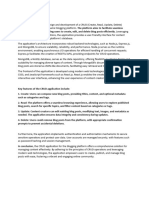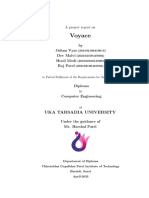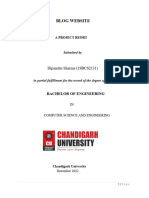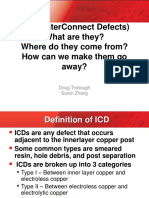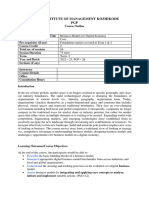0% found this document useful (0 votes)
37 views8 pagesWeb Tech Project
The Blogging Platform is a cloud-based web application designed for users to create and share blogs while fostering community interaction. It features a React.js frontend and a Java Servlet backend, providing secure user authentication, a personalized landing page, and a community page for exploring blogs by others. The platform's backend utilizes PostgreSQL for data management and is built entirely with pure Java, ensuring efficient control and customization of server-side processes.
Uploaded by
dineshraju3435Copyright
© © All Rights Reserved
We take content rights seriously. If you suspect this is your content, claim it here.
Available Formats
Download as PDF, TXT or read online on Scribd
0% found this document useful (0 votes)
37 views8 pagesWeb Tech Project
The Blogging Platform is a cloud-based web application designed for users to create and share blogs while fostering community interaction. It features a React.js frontend and a Java Servlet backend, providing secure user authentication, a personalized landing page, and a community page for exploring blogs by others. The platform's backend utilizes PostgreSQL for data management and is built entirely with pure Java, ensuring efficient control and customization of server-side processes.
Uploaded by
dineshraju3435Copyright
© © All Rights Reserved
We take content rights seriously. If you suspect this is your content, claim it here.
Available Formats
Download as PDF, TXT or read online on Scribd
/ 8






















